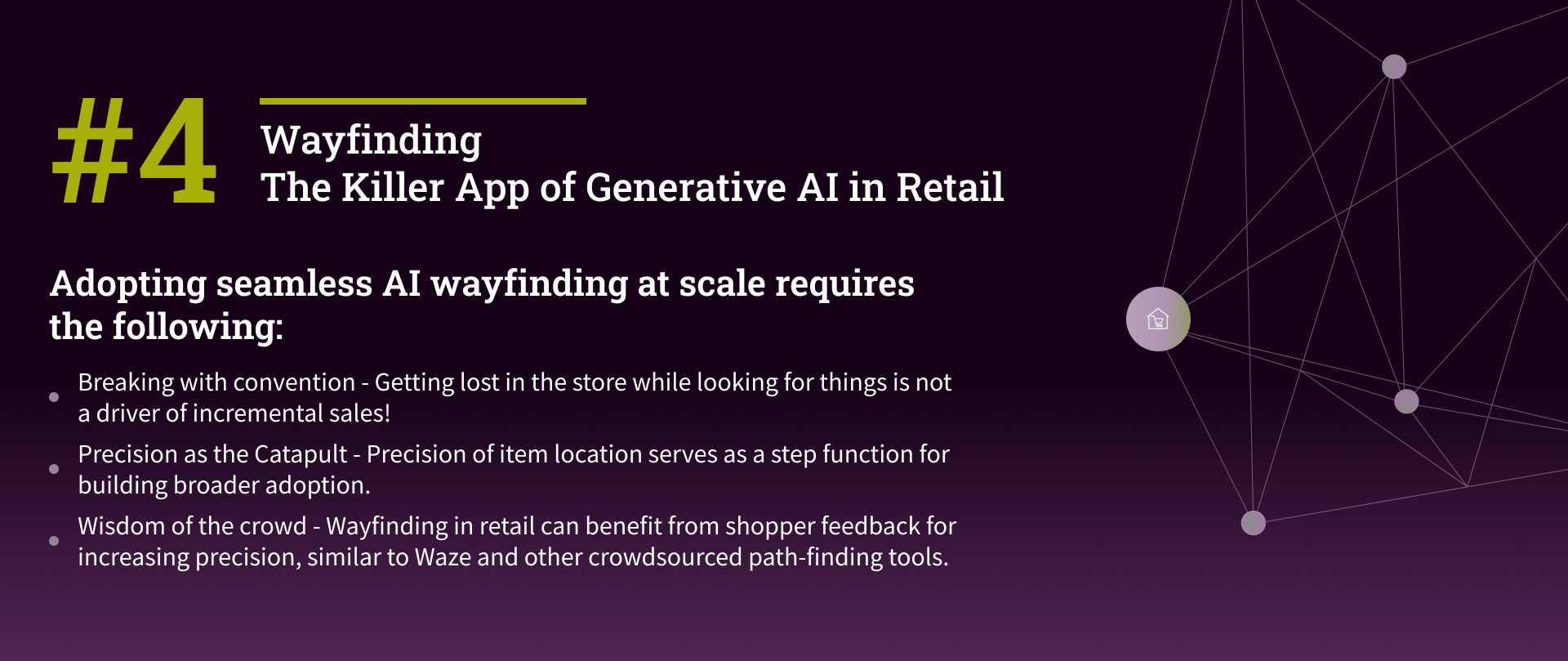Generative AI in Retail Series
Verneek
Jun 1, 2023
Digital technology permeates almost all life areas, changing how we communicate, travel, access information, and even meet our potential spouses! However, one area that seems to have remained immune from rapid technology adoption is brick-and-mortar retail. People living 150 years ago would be very familiar with our current retail experiences. Other than checking out and paying digitally, shopping in physical retail has not changed in a century. From a digital standpoint, it is easier to navigate by car from New York to LA than to find a product you are looking for at a 30,000 square feet store with 40,000 SKUs! Providing AI navigation in retail has never been timelier, given the recent breakthroughs in AI. Adopting it at scale requires breaking with some conventional thinking, making location data precise, and allowing for feedback from the crowd.
Breaking with Convention
One conventional take against providing shoppers with accurate tools for navigating the store is based on historical studies touting that having a shopper get lost while looking for something is not bad! The conclusions were based on studies dating back to 2007 showing that increased dwell time in the store led to increased basket sizes. In those analyses, more time in-store was determined to be the causal factor that increased sales. It also could be that someone with a long shopping list takes longer to shop. In fact, the larger the basket, the more time it takes to check out, transfer items to the car, transfer items to the home, and store all those items in the pantry and kitchen. So the shopping process for the high-ticket shopper is inherently the most time-consuming and hard work.
This outdated desire for having shoppers get lost in a store trying to find an item does not take into account the lives of the time-crunched shoppers and how the frustrations of navigating brick-and-mortar stores can translate quickly to a less enjoyable shopping experience –especially at a day and age that average consumers are enjoying the never-ending conveniences of shopping on Amazon! According to a Global Path to Purchase Study, 67% of shoppers leave a store without finding an item even though the product was on a shelf. Helping shoppers find products they are looking for could increase basket size, and the enhanced experience could drive customer loyalty and increase the shopper's lifetime value.
Precision as the Catapult
It is a no-brainer that a critical factor in AI-driven wayfinding is ensuring that the underlying item location information is accurate and up to date. Actually, having an inaccurate wayfinding service is worse than not offering one at all! Customer adoption of retailer apps has been a slow process, and delivering accurate information on the location of products in the most seamless way using your language, can be a great way of attracting shoppers.
The higher the precision, the better the shopping experience: getting accuracy at the shelf level, especially for categories with tiny packaging such as vitamins, spices, beauty, and skin care, makes all the difference. AI-driven mapping and visualization can show the shopper the exact shelf row in an aisle where the item is located.
Wisdom of the Crowd
Providing AI-driven item location capabilities initiates customer engagement that allows them to provide timely, accurate feedback. Through seamless voice or text interfaces, customers can give instantaneous feedback on whether the location information has been correct – if the item was actually in stock or if they were taking the last item on the shelf. This customer feedback won't replace shelf audits and inventory monitoring applications, but it does provide a rich feedback loop on the success of the AI wayfinding for improving the next shopper's experience.
The time for widely adopting AI-driven store navigation is now! Given the recent breakthroughs in AI, the advanced voice-driven Shopping AI can provide instantaneous and accurate item location by simply asking out loud what you are looking for. In our next posts, we will discuss how we have shown that this very killer app in retail has increased sales, reduced operating costs, and enhanced the overall shopping experience to build deep loyalty.


